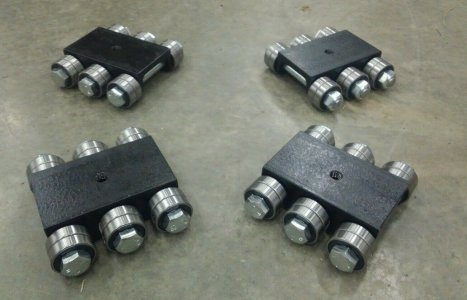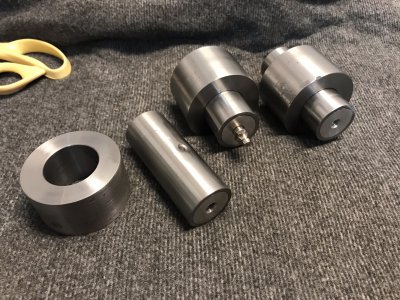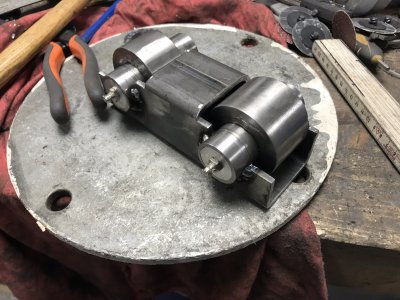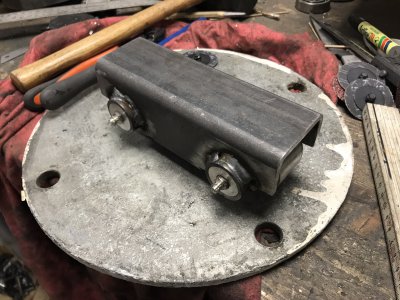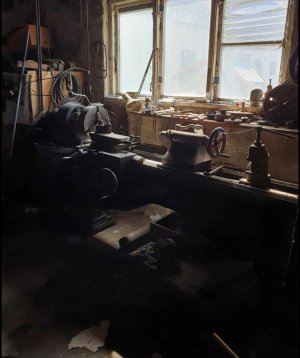- Joined
- Nov 24, 2014
- Messages
- 3,184
For conventional radial ball bearings, the bearing load ratings ASSUME the bearing is mounted in a housing that will support the outer race.
When you use the bearing assembly as a wheel (with no housing) the outer race will deform (flatten) under substantial load.
Cam followers are designed to run without an outer housing so the ratings are useful for the machine dolly application.
If you're going to use radial ball bearings, be very conservative with bearing size/quantity and/or make heavy wall steel "tires" to suit.
When you use the bearing assembly as a wheel (with no housing) the outer race will deform (flatten) under substantial load.
Cam followers are designed to run without an outer housing so the ratings are useful for the machine dolly application.
If you're going to use radial ball bearings, be very conservative with bearing size/quantity and/or make heavy wall steel "tires" to suit.


